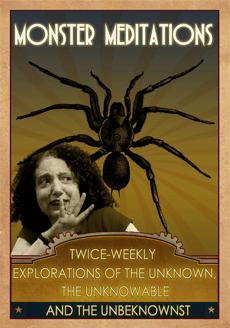The opening lines of Daphne Du Maurier’s Rebecca are haunting, not solely for the obvious poetry of her language, but also because the house is a pivotal character in the novel:
Last night I dreamt I went to Manderley again. It seemed to me I stood by the iron gate leading to the drive, and for a while I could not enter, for the way was barred to me. There was a padlock and a chain upon the gate. I called in my dream to the lodge-keeper, and had no answer, and peering closer through the rusted spokes of the gate I saw that the lodge was uninhabited.
I know I’m not alone in my fascination with places that are as vivid as any character in a story. I had to look up the name of Miss Havisham’s house in Charles Dicken’s Great Expectations (it’s Satis—‘enough’ in Latin), but the house as a character—as well as both a prison and a refuge for the heartbroken woman—is as powerful as any location in fiction. It’s impossible to imagine Miss Havisham without picturing the walls that surround her in her self-imposed exile.
When I travel, I’ve often visit important historic sites. A few months ago, I was in Venice. This was in October, shortly before the record-breaking aqua alta (high water) that flooded San Marco Square for weeks on end. The piazza, the bell tower, the church, the Doge’s Palace, and the shops and cafes around its edges are all ‘characters’ in a setting that’s been painted by famous artists and described in many stories. It was one of my late mother’s favorite places in the world.
On the final evening of my visit, I wandered around the piazza and then met a friend for a drink at Caffè Florian. Opened in 1720, this is not just a place for a simple coffee or a spritz. It is a place where you soak up history while you’re paying a premium for the location and the band’s rendition of ‘Don’t Cry for My Argentina’ and ‘A Few of My Favorite Things.’ The outdoor tables offer an endless show of international tourists and inside there’s the hush of a historic teahouse with ornate mirrors and fabric covered walls, that give the feeling of a stage set for a story set any time since 1750 or so…
Venice the city is a character in all of Donna Leon’s Inspector Brunnetti mysteries. But Florian’s, in all its faded and appealing glory, is the character I long to explore—that and San Marco both when it’s crowded with tourists and when the cruise ships and trains have taken the day trippers away and left an eerie quiet behind.






I’ve loved Venice from the moment I first saw Death in Venice. That first view of the city, to the accompaniment of Mahler’s 5th is etched into my mind forever. Could not imagine that story anywhere else in the world because the city provides the counterpoint to the ‘action’. Dune, too, is another work of fiction that is carried by the character of the ‘place’.
DUNE!!!
It’s so funny, I was thinking only of real places, or imagined buildings in real places, but science fiction and fantasy are full of completely imaginary places that are REAL in the story and sometimes feel real after you’ve finished reading the book.
The places that resonate are very much characters in the same way any human (animal, alien, magical) character is real!